Codes of Survival -Scripts - a series of short factionalized stories based
on historical events in the Subantarctic Islands written by Lloyd Godman
to accompany the exhibition and installation - 1993 - © Lloyd Godman
Codes of
Survival - Scripts
turn sound on for effect while you are reading - click soundscape which will open a new browser page and then return to original page
1954 - A TIN OF PAINT
McQuarie island is the most bleak
and desolate place I have ever seen. There is hardly a plant
that could raise itself more than a few inches off the
soggy soil due to the incessant
force of the wind. And if it did,
it would surely be cut throughby the persistent flying hail and
fine sand as if attacked by sand paper. I was sure glad to leave that inhuman
place!
We were now on the return to New
Zealand and the"Holmlea" had called into the legendary
Auckland Islands  , which presented a welcome change
to the view of endless sea. There was bush here. In some places, clumped
right down to
the waters edge, and great trunks,
twisted by the same windsthat swept McQuarie island. The
welcome song of bell birds drifted among the higher
branches which merged in a total compact head of leafy clusters that appeared
to hug together for protection. The forest seemed to snuggle across the
hills like a single coat from one gigantic marino
fleece. , which presented a welcome change
to the view of endless sea. There was bush here. In some places, clumped
right down to
the waters edge, and great trunks,
twisted by the same windsthat swept McQuarie island. The
welcome song of bell birds drifted among the higher
branches which merged in a total compact head of leafy clusters that appeared
to hug together for protection. The forest seemed to snuggle across the
hills like a single coat from one gigantic marino
fleece.
It appears that each inch of growth this forest makes enables the next plant to grow an extra inch higher  . Its neighbour beers the
brunt of the driving wind storms as the wind sheer factor
afforded from the foliage toward the wind, offers enough
protection for the whole living forest to gather itself from the
ground and gain the full height of about thirty feet over a
distance of several hundred feet. Sadly where the forest at
Enderby has had this cover broken, it appears that the wind is cutting through and killing of the forest from inside out  . We could sense the history and folklore of the place, the
hardships, trials and tribulations of the various people that had passed through for what ever reason. We knew some of the
history of Hardwicke  , the failed attempts to settle and farm
that had only ended in bitter disputes , the failed attempts to settle and farm
that had only ended in bitter disputes 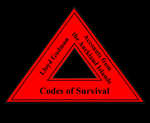 . We knew also of the shipwreck days and the plight of the desolate castaways. As we stood beside the few isolated graves at Erebus Cove, the peeling paint and recessed letters caved into the stone tombs revealed as brief facts, the truth of those times and the fatal
struggles of people now long buried beneath the soil. . We knew also of the shipwreck days and the plight of the desolate castaways. As we stood beside the few isolated graves at Erebus Cove, the peeling paint and recessed letters caved into the stone tombs revealed as brief facts, the truth of those times and the fatal
struggles of people now long buried beneath the soil.
The death of a child, but a few weeks old. A shipwrecked seaman from a lack of rations. Those were demanding times, when a life could be taken at the whim and the change of a wind. They knew few of the modern comforts that we enjoy today. They were pioneering times when the world was still young and waited discovery and the promise of fortune. I wondered if the
memories of these miserable deaths had faded faster than
the paint that now peeled from the zinc plaques tacked to the disintegrating wood of the rough grave markers. It seemed
as though no one knew the truth of their existence or the
tragedy of their deaths, perhaps these tombstones stood not as
an epitaph to the life or death of these people, but as an epitaph
to the age in which they lived. They were as much about the
people, as they were about their era, and that intrigued me.
It was an age that forged much of what we are now, our attitudes and the very society we have become. Strong, they stood for the evolution of a people and the growth of a nation. As much as it
was these people who were responsible, it was the nature of the
land and the climate that was conceived in these very areas of the ocean and then came sweeping up towards New Zealand with unpredictable vengeance. These few lonely graves held such a fascination for me, and the others in the party too. They made
me think, they made me feel who I was. They were as much
about us, as we were about them. I felt some meaning here.
We had brought with us a stiff brush and sand paper to prepare
the surface and clean the chalked, flaking paint that was the only record for us to freshly retrace the lines. For these freshly painted lines would become the only written legacy for those who would come in the following generations, to ponder the history, the
people, their death and perhaps themselves.
There were but a few colours for us to choose from; a black,
a white and a small tin of gold. And yet their colourful lives
seemed to demand an extraordinary array of colour. First we
cleared away the vegetation that was gaining a hold on the area around the cemetery and across the raised earth of the graves.
The dracophyllum tree grass was the most evasive plant
among the moss covered ground. But there were also small rata trees beginning to grow, and low to the ground, even small green hooded orchids shooting upward for the summer. It seemed
a pity to have to pull all these plants up by the roots and
toss them aside, but they would soon have overgrown
the cemetery.
There should really be a strong fence erected around the markers and graves, as there is some sign of the wild pigs that occupy this island rooting the ground, in some places right next to the
markers. However, that may be a job for another party
that visits the island sometime in the future as we have
neither the time or the materials for fence construction.
Once we had cleared the area, we began the painting.
Across the markers was a patina of flaked and peeling white
paint mixed with the subtle variations of green, yellow
and orange from the moss and lichens the clung across
the surface. There was some work in brushing and scraping
this away, but eventually, we had a clear surface ready for
the first coat. We gave them three coats of the thick white
paint, and while the paint dried between coats which took
about 8 hrs, we had time to wander through the remains of
the old hardwicke settlement.
There really was little to see as a remembrance to the
buildings that once stood here. We located the few remaining
floor boards of the Governors house, now only partly visible
above the ground as they disappeared under the earth in a
contorted twist. There were a few old bricks, the chalk red now completely covered with olive coloured moss, and only
recognisable by their shape, scattered through out the bush
cover. At one time there had been an active community here
with 18 dwellings erected, in addition to the barracks and Government house. There were also workshops, half a mile
of road and even a gaol.
All this had been right here, under our feet, right where we
stood, and now it was all lost to the land except for these
few remains and the graves we tended. These settlers had
planted all kinds of vegetables, berry fruits and fruit trees,
around which they had built shelters. They brought in horses,
cattle, sheep and pigs, but now there was no sign of any of this except a few surviving pigs and goats that endured the
climate on this main island. The rest had died off over the intervening years. There was even a story of the release on
the island of possums and the fact that they all died off due
to the harsh climate! Enderby Island still had its cattle  and
rabbits though. and
rabbits though.
This was a place where the land had defeated the efforts of
man, it was a place that belonged to itself, a place beyond pacification. Once the grave markers had been prepared, we began the
careful job of repainting the telling words that defined the person and their fatal situation. The contrasting colour flowed in
fine lines to form the words that spelt the legacy of these graves. Every word seemed to cut deep into my mind.
"Isabel Younger, aged three months, Died 19th November,
1850, of Inflammation" 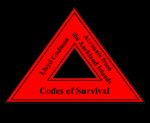 "Thomas Cook, Mariner, aged 22, Drowned on 7
September,
1851"
"Janet Stove, aged fourteen weeks, died on 10th October,
1851 of Convulsions" 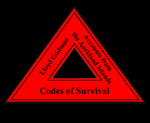
"John Edward Downs, Mariner, died on 21 February,
1852 of Dysentery"
"SACRED to the memory of JOHN MAHONY Master
Mariner second mate of the ship Inverauld Wrecked on this
Island 16 May 1861 Died of Starvation" 
clearly read the
recessed letters as the light cut across the inscription carved
in the stone at an oblique angle in a the next tomb stone. It was actually the ship Invercauld, spelling mistakes carved in stone are there forever, if you have the chance to make them.
"David McClellan Aged 60 Died 21 September 1867" 
"In memory of Jabez Peters R.I.P Late Mate Barque
Dundonald Wrecked on Disappointment Island Where
he died of exposure
Died 25 march 1907"  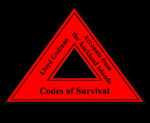
This wooden marker was rotting away
with time and the circle that had once embraced the point
where
the cross met had fallen away on the bottom and the top
half hung together on the barest of threads. Then there were the markers that had no words to trace and
would have to stand the impartial ambivalence of only the
thick white paint. We stood back almost breathless, though there had been no real physical effort in our task, gazing at the clean
earth with the crooked markers now freshly painted poking
upward unlevel from the swelling roots beneath the ground.
At the base of the track is a boat shed that had been built to
house the dinghy, and was put there to assist any castaways
by the Government steamer, and inside with the failing
timbers that had once been this boat, we left the tightly caped
tins of paint and the brushes that were now clean. Inside was
also other reminders of the days of the castaways, the broken
cases that contained the essential supplies they had used,
bottles of one kind or another, a few slate tiles from the
Enderby settlement 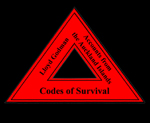 , iron fittings from some long
forgotten source. , iron fittings from some long
forgotten source.
Perhaps sometime in the future when others are visiting this
isolated and unfrequented island they may come across our
tins and brushes and have the thoughtfulness to repaint the
same words on the same grave markers for the next
generation to remember.
|